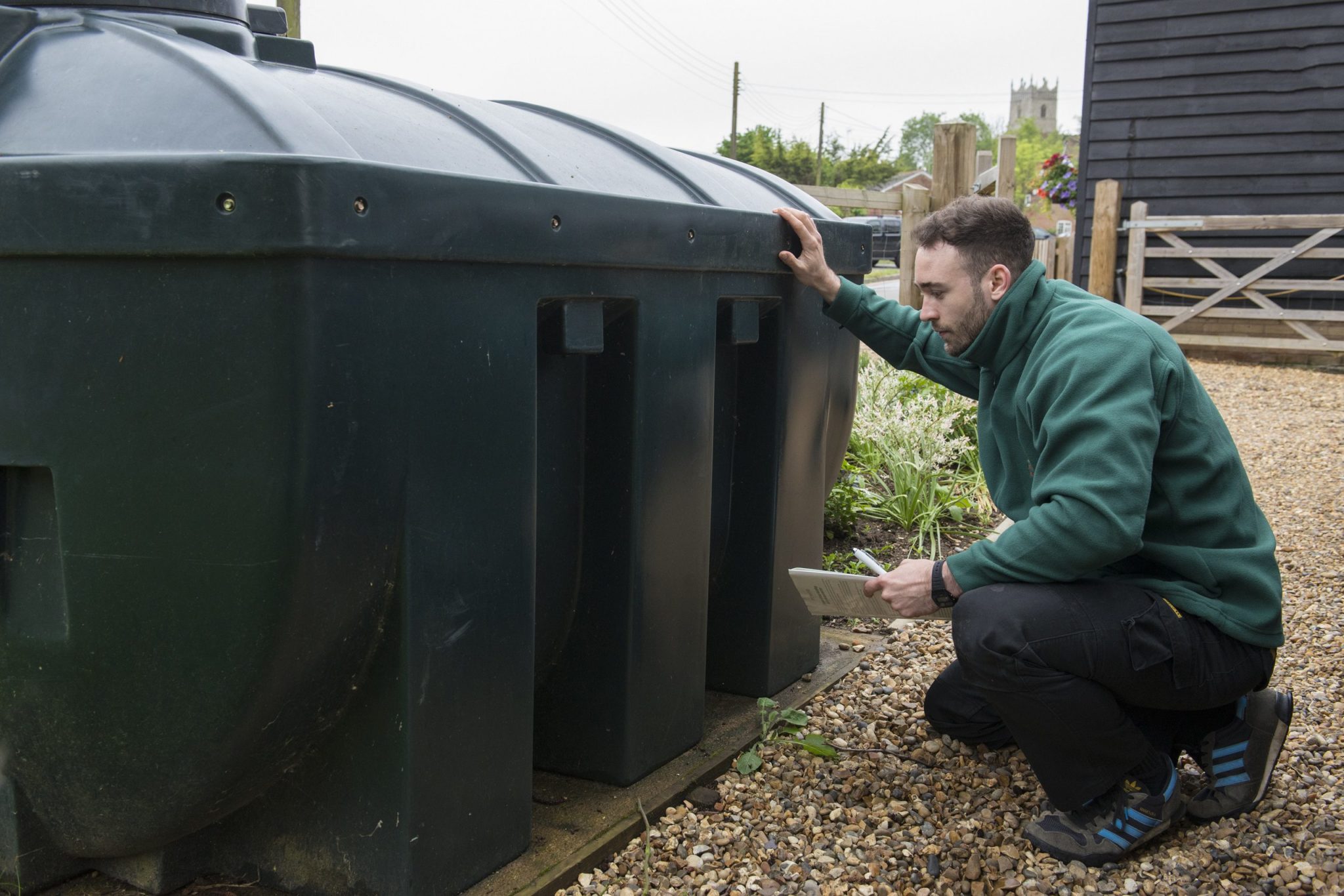The correct way to decommission used tanks.

OFTEC’s technical department is often asked what the correct procedure is for the disposal of storage tanks, especially when a new tank has been installed.
The improper removal of a fuel storage tank can result in a serious accident and/or pollution incident. Therefore, it is necessary to consider all potential safety and environmental hazards and adopt appropriate precautionary measures.
In most cases, fuel storage tanks can be removed whole. Dismantling or cutting up tanks, especially steel tanks, should only be considered as a last resort where no other option is possible. It is a very hazardous procedure, and it is strongly recommended that this is only undertaken by specialist operatives who have the right equipment, expertise, and insurance.
Before starting work the tank should be isolated, and all fuel removed from the tank. Any residue can be flushed out with water, allowing the fuel to float up to a level where it can be removed by a suction pipe. The residues, and contaminated water, should be safely stored in suitable containers which are appropriate for transportation and labelled accordingly. After the tank has been emptied and removed, check that the surrounding soil or groundwater hasn’t been contaminated.
Decommissioned tanks taken off site must be removed by a licensed waste carrier and must be accompanied by appropriate documentation. Tanks can only be disposed of at an appropriately licensed facility. There are legal obligations for all trades, including heating technicians, to properly remove, transport, and dispose of all trade waste. Technicians should contact their regional environmental regulator to discuss their legal obligations, details for each area are:

Technicians have a duty of care in dealing with any waste and failure to comply with these requirements could lead to prosecution. Technicians who generate any waste are defined as waste producers and are responsible for how such waste is transported and disposed of, even if this work is contracted out to a third party.
Those transporting and disposing of waste will need to hold an ‘upper tier waste carrier licence’ (referred to as ‘waste carriers licence’ in Scotland). Waste contaminated with fuel is considered a greater risk and is therefore designated as hazardous waste (referred to as ‘special waste’ in Scotland) which may have stricter rules to follow, including the requirements on the carriage of dangerous goods. Although holding a waste carriers licence may allow a technician to transport waste within a country/ region, cross-border transport will likely require further documentation.
Technicians are responsible for the final disposal of waste they create or transport, even if this work is contracted to a third party. This stresses the importance of only contracting licenced waste carriers.
Technicians should know where the final disposal of their waste will occur and should satisfy themselves that it is appropriate. There is no defence for a technician whose waste ends up illegally dumped by a third party – responsibility usually still rests with the technician if the waste can be tracked back to them. Most environmental regulators host an on-line search tool to help find licenced waste facilities.
A system of record keeping is required for those transporting, handling, or disposing of waste. The system varies from country to country or region to region. Usually, ‘waste transfer notes’ or ‘hazardous waste consignment notes’ or ‘special waste consignment notes’ are mandatory. These are sometimes physical forms, although some regions now use electronic forms. These records track the waste from generation to disposal and leave a clear paper-trail demonstrating what waste was transported and disposed of, and who was responsible for the various parts of the process.
The records must be kept for your protection!
Image from stock
© 2025 Created by Euromedia Associates Ltd